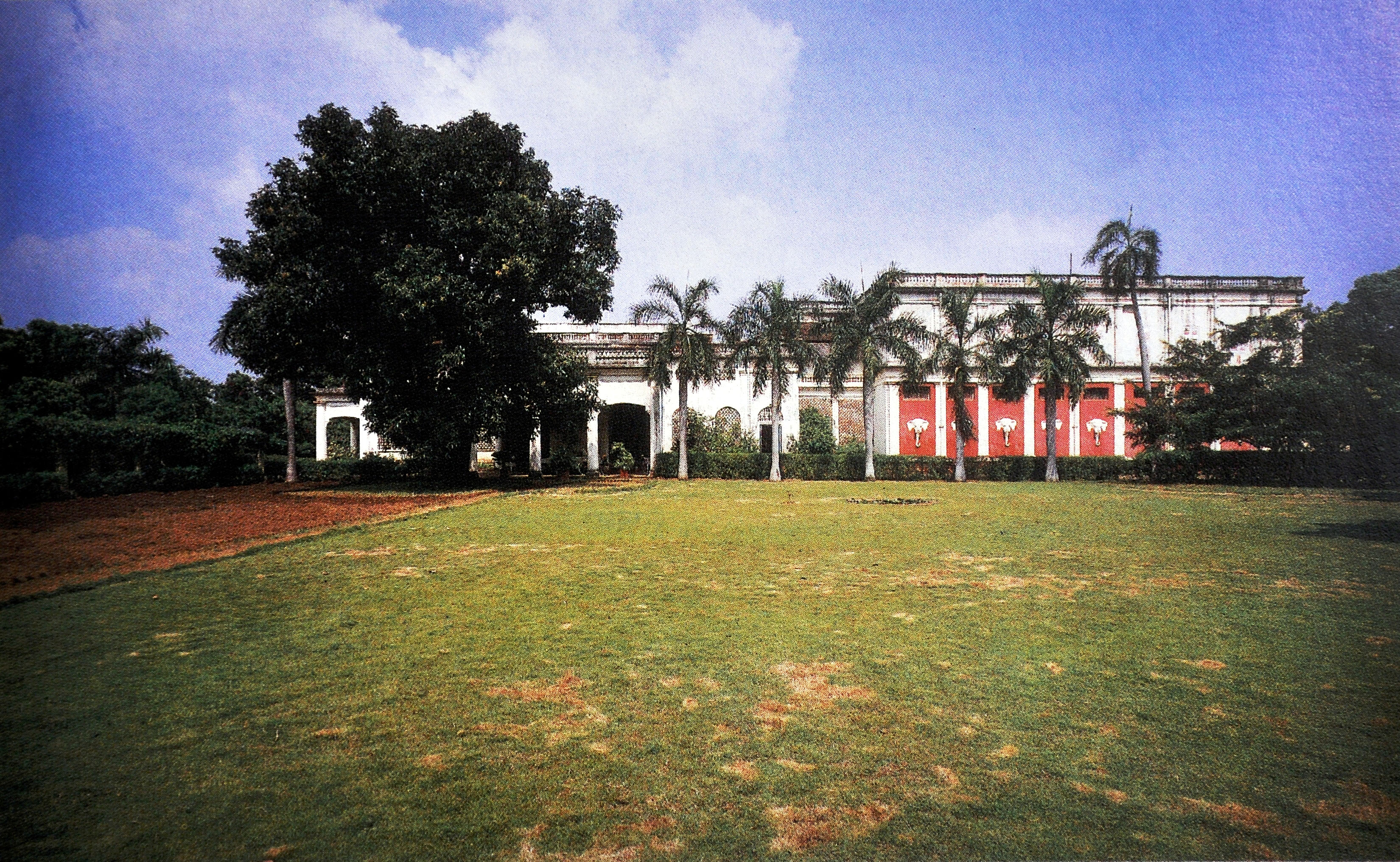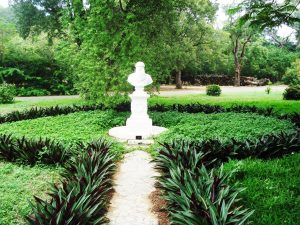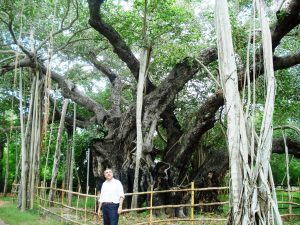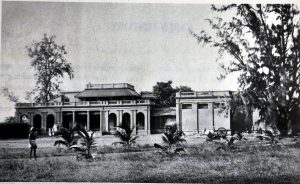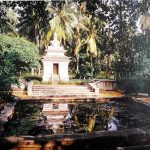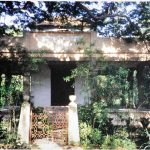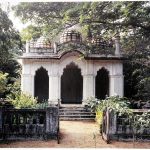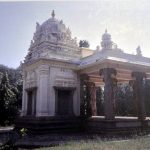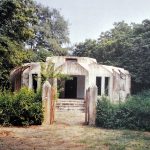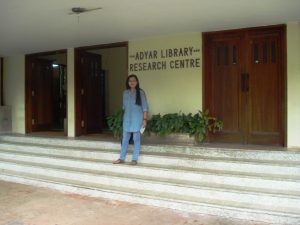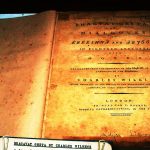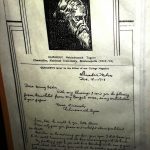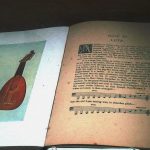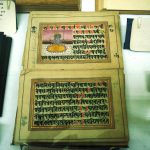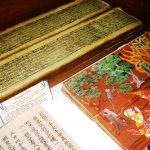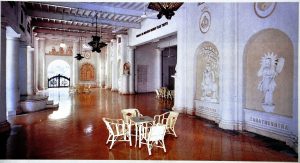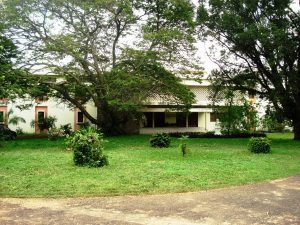Adyar – Tranquil Splendor
With a zest to view one of the world’s oldest collections of books and manuscripts, we headed for the Adyar International Theosophical society complex, which unlike its tongue twisting name was a mini paradise of natural beauty and multi-religion shrines. Leaving behind the commotion of Chennai city, we crossed a bridge over the river Adyar to enter the locale of tranquil splendor.
The Theosophical society- a Peep
This society was set up by Colonel Olcott and Helena Blavatsky and later tended by Annie Besant (also the first Women President of the Indian National Congress) to promote Theosophy; emphasizing all religions of the world without an iota of superstitions. The Society was first founded in 1875 by them in New York and while searching for an ideal headquarters for the society, they travelled to Bombay and finally arrived in then Madras on 31st May, 1882. Here they found 24 acres of wooded land and gardens surrounding a large bungalow and two smaller ones at a site called Huddleston gardens on the banks of river Adyar. There were quite a few transitions to make the Adyar estate look like, as it can be seen today.
Soon we were at the beautiful 250 acre estate with a one mile long river frontage and a sea frontage of about one third of a mile! Whether we walked along the shady avenue or later by the sea shore, we felt a unique sense of peace and serenity which engulfed us there. The Adyar river bungalow and Adyar river estuary beyond, is a nature enthusiast’s fascination and a sanctuary for unusual species of animals and birds (numbering 150). Nearing the sea along the river path, we came upon the Garden of Remembrance created by Dr. Annie Besant. After she passed away, her ashes were mingled with its soil and subsequently the other prominent leaders of Theosophical society were buried here too.
The Banyan tree
Going past much natural beauty we reached the awe –inspiring Banyan tree, one of the major attractions of the complex. The fabulous tree is 450 years old, has circumferences of 251.65 meters, height of 12 meters and an area of 4670 square meters! The central trunk of the tree has now disintegrated with age but the surrounding trunks and roots continue to multiply with hundreds of aerial roots spread in all directions. I was pleased to be beneath the same tree where several great men and women like Dr. Annie Besant, Gandhiji, HH Dalai Lama and many more have attended functions in the past!
International Headquarters Building
Walking towards the eminent library we passed the International headquarters building which holds the busts of Colonel Olcott- the founder President and Annie Besant- the second President. Among other things we crossed were Society’s museum and archives with manuscripts, correspondence, Madame Blavatsky’s personal things, rare paintings and many items of art and antiquity. The walls of the hall represent the living religions (Buddhism, Hinduism, Christianity, Islam, Jainism, Judaism, Zoroastrianism, Taoism, Confucianism, Shintoism and the Bahia’s) along with the extinct ones.
Shrines-complex
Next, we went to the Shrines-complex which is a befitting presentation of the religions of our country, all represented in one compound! The Buddhist Shrine located in the coconut grove near the river has a sandstone image of Lord Buddha from eastern India that shows Buddha as a teacher of Dhamma, turning the Wheel of law. Passing the Lily tank in front of the temple we saw a remarkable Bodhi tree grown from a sapling taken from the original Bodhi tree in India – Bodhgaya under which Lord Buddha attained Nirvana or Enlightenment.
- Buddhist Shrine
- Zoroastrian Temple with Assyrian figures
- The Mosque-replica of Pearl mosque,Agra
- Temple-the Jyotir-Alaya
- Sikh Shrine
After resting for a while here at the serene spot we went to the beautiful Church of St. Michael and All Angels.
The Hindu Shrine is called Jyotiralaya (Temple of Light) which has no idols like an Arya Samaj mandir and prayers are performed by chanting Vedic verses.
The Mosque ahead, is a mini replica of the Pearl Mosque of Agra.
The Zoroastrian temple holds Assyrian figures- the animal-men, horses and the winged-figure; all signifying their religious sentiments.
Lastly, we went past the Sikh shrine which is a small prayer hall.
Trinitrons
Noteworthy are five sculptured Trinitrons that Colonel Olcott found from a ruined temple in Chandragiri in South India and erected them at special spots in the Adyar estate. They are believed to be more then 2000 years old.
Adyar library and Research centre
Finally, we reached the Adyar library and Research centre that contains over 250,000 printed volumes and nearly 20,000 Palm leaf manuscripts from India, Sri Lanka, China, Siam, Persia and other countries! The Sanskrit manuscripts are majorly from India. However the old and rare books are in English and an assortment of other languages, besides Sanskrit.
The first book that caught my attention was the Sphera Mundi, printed in 1490 in ‘The floating city’ of Venice, Italy. The book on Astronomy and Geography with diagrams and charts proves that the author knew earth was round; two years before Columbus discovered America!
Besides, the manuscripts of great epics Ramayana and Mahabharata; we also saw the display of the complete set of xylographs of Kanjur (Translation of the Word of the Buddha) & Tanjur (Translations of the Teachings) – the sacred scriptures of Tibetan Buddhists created on paper made from the barks of trees and printed with stone blocks. Though, most of the original Sanskrit work is lost, such copies of Sanskrit to Tibetan remain. Kanjur & Tanjur contain Sanskrit works of great significance.
- Bhagvat Geeta-18th centur english translation by Charles Wilkins
- Rabindranath Tagore’s letter dated 18.12.1918
- One of the oldest book-Sphera Mundi,1430
- Miniature Bible
- Kanjur and Tanjur
The 18th century Sanskrit to English, translation of all the 18 chapters of the Bhagwat Geeta by the famous Orientalist Sir Charles Wilkins caught our attention. Sir Wilkins, a typographer too, was a founding member of Asiatic Society of Calcutta, set up in 1784 by the illustrious scholar Sir William Jones. The translation even had an introduction letter from Warren Hastings dated 3rd December 1784. Further exhibited was the hand written letter by Gurudev Rabindra Nath Tagore to the Editor of the College magazine dated 18th December 1918 from Shantiniketan, enclosing a translation of his Bengali to English verse, by him.
To cite a few, the other manuscripts in the Library related to Vedic work, an addition of 108 Upanishads with English translations, Buddhist works restored into Sanskrit from Tibetan and Chinese, a 600 year old Quran, miniature Bible, illustrated Siamese literature and important works on music.
Outside the library, in a spherical garden, we photographed the white bust of Colonel Olcott who found the Adyar Library and Research Centre (ALRC) in 1886, for researching eastern civilization.
We were informed by the caretaker that currently; the Library’s manuscripts are being used in several key publications of other institutions, universities and by scholars in India and abroad. The latest news is published in the Adyar Library bulletin; Brahma-Vidya, since 1937. It was sad to note the rundown condition of the library, due to shortage of library funds, so a Library Endowment Fund has been created with the hope to sustain the library.
Theosophical Society – Today
The Society has its own publishing house where their monthly journal and a quarterly newsletter are printed. Since 1907, the printing and book-binding are being done inside Adyar estate and to further this work; Vasanta Press was built in the Besant Gardens in 1971. Books on different genres like religion, yoga, mysticism and philosophy are sold here.
Additionally, in the Adyar estate there are three main buildings, which we visited in the last leg of our day tour. The first is Bhojanshala which has a traditional courtyard with the sacred Tulsi plant adorning the center place. Nearby, lies the School of Wisdom from the East and West. Past the great Banyan tree, is the third building called Leadbeater Chambers with a capacity of 100 people who can stay here during conventions. From one of its rooms, we witnessed a panoramic view of the Adyar River as well as, an impressive view of the estuary into the Bay of Bengal. We were told that even on hot days, the Chambers remain cool due to the sea breeze.
The Estate is so humongous that it has its own electricity, water supply system, internal telephone network, laundry, Post office and a bank too! We were overwhelmed to see that it was all very well maintained.
We had a quick look at the Olcott Memorial School which provides free education to 700 children and also offers free books, uniforms,breakfast and mid-day meals.
We were impressed to see the Centers inside the complex. The Craft Centre instructs children about carpentry, plumbing, training, music, dance, games, gardening and scouting. There were many more centers in the complex – Social Welfare centre, Animal Welfare centre and Besant Scout Campaign Centre to name a few.
Our trip was worth the effort as in one day we not only had experienced a brush with history and culture but also witnessed the immense philanthropic activities of the Theosophical society.
